Extraction of │ is not a knowledge, it depends on your article to understand it?
Coffee is made up of more than 1800 chemicals and is one of the most popular drinks in the world. Coffee is actually a general term for the fruits of coffee trees, roasted coffee beans and ground coffee powder. after brewing in hot water, the soluble substances in coffee will be fully released, and the insoluble parts will be filtered. The black beverage has become an integral part of the daily life of consumers around the world.
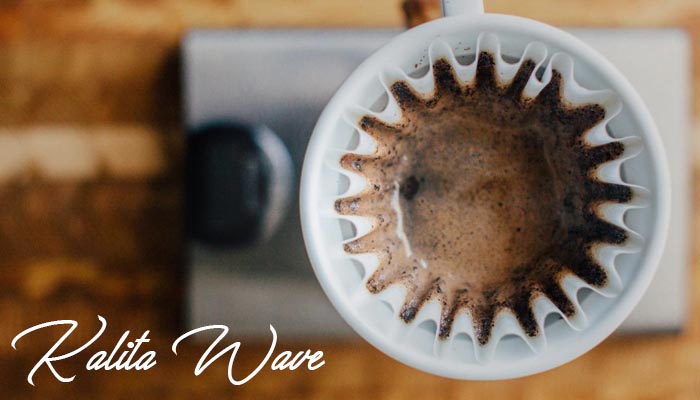
There are many ways to brew coffee. Through the principle of "solid-liquid extraction", people extract the best quality of coffee to the maximum extent through different methods, and the definition of coffee quality usually varies from person to person. Due to the complexity of chemicals in coffee, it is very difficult to ensure the highest quality of coffee in order to achieve accurate extraction. However, if we can understand the process of coffee extraction from a mathematical point of view, and identify the different variables that affect the quality of coffee, the process of brewing coffee will become easier. Recently, Kevin M. Moroney, William T. Lee, Stephen BG O'Brien, Freek Suijver and Johan Marra published an academic article in SIAM Journal on Applied Mathematics, showing and analyzing a new multi-dimensional analysis model of coffee extraction.
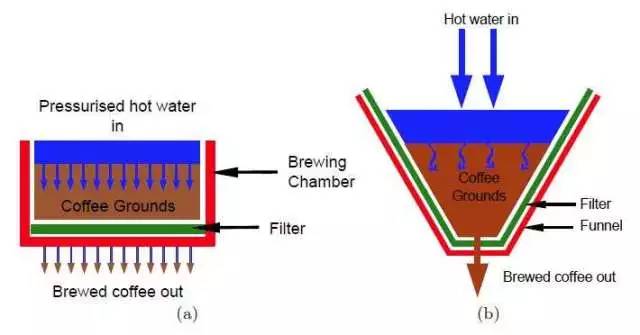
Graphic illustration
Figure (a), espresso is made by pressing hot water into the coffee pressed powder under high pressure, which is made of fine ground coffee powder; figure b). Drip coffee is made by pouring hot water over a large number of V-shaped vessels of drip coffee, which is usually loosely placed. In both ways, the coffee substance in the coffee powder is extracted, the undissolved substance will be filtered out by the filter, and the coffee liquid will flow out of the filter.
Pressurised hot water in-Hot water enters the coffee powder in the head under pressure
Coffee Grounds- coffee powder refers to the coffee powder that is compacted in the head.
Brewed Coffee Out-brew the coffee
In the previous mathematical analysis of coffee extraction, researchers mostly focused on the drip brewing system. According to statistics, more than 18 million coffee machines are sold in Europe each year, of which about 10 million are sold (including hand coffee pots). The working principle of the drip filter coffee machine is that water is driven by gravity to filter the coffee powder, extract the soluble substances, and finally make coffee.
In the newly published article, Moroney and other authors continue to deepen and expand their research on the drip filter coffee machine, modelled on the article published in the journal Chemical Engineering Science since 2015. "previous studies on coffee extraction models were mostly based on a mass mixed brewing system, or without an accurate definition of the extraction principle and practical experiments." Moroney said, "in contrast, our model accurately describes the process of water flowing through the powder bed to complete the extraction, precisely defines the extraction principle, and has carried out a large number of experiments on the model through experiments. Initially we focused on the way the water in the cylindrical filter flows through and extracted the coffee, and modeled through a large number of experiments to ensure that the data support is true and effective. "
In a previous article, Moroney developed an extraction analysis model that includes factors such as powder bed distribution, flow rate, grinding uniformity and pressure level. The premise of establishing the model is that the temperature is constant, because the optimum extraction temperature of coffee should be between 91 and 94 ℃. Second, the powder bed extraction is uniform, that is, water fills all the pores of the powder bed to realize the uniform extraction of all coffee powder.
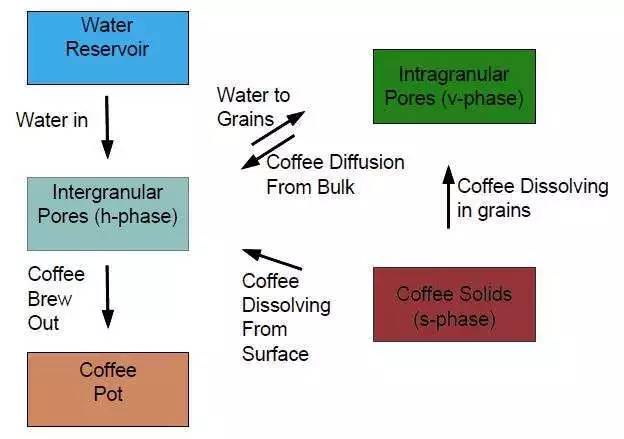
Graphic illustration
This picture shows that coffee is extracted from different extraction methods under the action of water, Italian concentrated coffee is extracted from the surface, drip filtration, coffee is extracted as a whole.
Now, the author has further improved this model. "although the model we published earlier is perfect at the mathematical level, it is limited to computer calculation and requires a large number of mathematical formulas." "the new model we are studying now simplifies the calculation as much as possible and is more suitable for the analysis of the actual situation and the answer to practical problems," he said. "
The brewing process of coffee is very complex, how to simplify it as much as possible is particularly important. "when modeling complex physical phenomena such as coffee brewing, researchers usually use a series of formulas to simulate the core process." O'Brien said, "through mathematical formulas, we can further simplify the analysis of phenomena, but usually such mathematical models are based on certain premises and are not closely integrated with the actual situation."
The author adopts non-dimensionalism, and the variables covered are directly related to the nature of the problem, in order to further simplify the extraction model. Through this method, the author reduces the number of variables as much as possible, including brewing ratio, time, water quality, water temperature, grinding degree, coffee powder distribution, extraction uniformity and so on. so that the author finally achieved the goal of "ignoring individual subtle parameters to achieve the optimal solution".
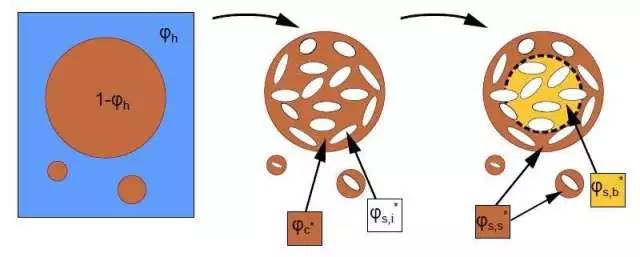
Coffee pressed powder is composed of coffee particles and coffee crystals, and coffee powder is also a combination of crystals and solids.
"the optimal solution is based on the condition of the coffee powder bed at different stages of extraction." Moroney said, "in the initial stage, the extraction concentration of the coffee powder bed depends on the extraction rate of the surface coffee powder and the speed of the coffee powder free from the powder bed. After that, the extraction depends on the slow immersion of the larger particle core, which can be ignored at the initial stage. " Although the total extraction time of fine ground coffee powder is shorter than that of rough ground coffee powder, the authors say that the model is also suitable for smaller coffee powder particles. "the value of the model is that we can relate the performance of a brewing system to the characteristics of coffee, water and the equipment itself." The ultimate goal of creating the model is to predict the final quality of coffee, Moroney said.
"the aim of the study is to improve our understanding of the brewing process and what factors affect the perceived taste of coffee." He said.
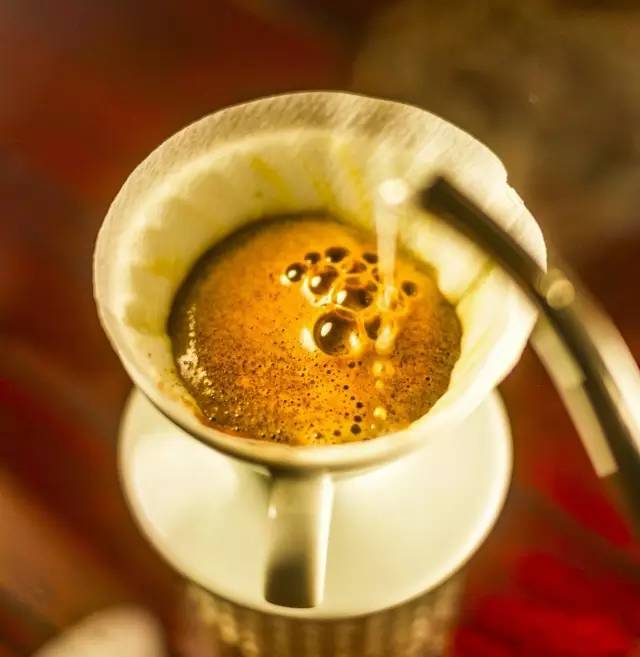
Important Notice :
前街咖啡 FrontStreet Coffee has moved to new addredd:
FrontStreet Coffee Address: 315,Donghua East Road,GuangZhou
Tel:020 38364473
- Prev
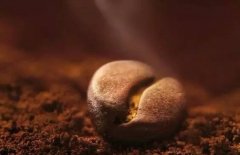
Domestic boutique coffee is too superstitious about fruit acid?
The editor often hears some friends complain that fine coffee is not the same as light roasting, let alone that heavily roasted beans are not fine coffee. The third wave of boutique coffee must be light roasted? Re-baking is more difficult than shallow baking. The essence of the third wave of fine coffee is the subdivision and promotion of the origin of coffee, shallow roasting only to highlight the flavor of the place of origin. Re-baking
- Next
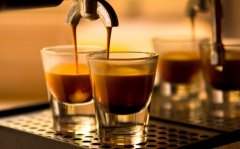
Italian concentrated production of the treasure book, you deserve to have!
The first one to learn is a cup of espresso, and the last one is a cup of espresso. ① extraction principle espresso (Italian espresso, also known as espresso) is essentially a filtration method using a precision metal filter. Compared with gravity filtration, the biggest difference is pressure. The espresso machine pushes high-pressure water through the coffee pressed powder, that is, in the coffee powder
Related
- What documents do you need to go through to open a coffee shop? coffee shop coffee shop certificate processing process
- How to purchase Coffee beans in small Cafe how to choose a suitable supplier for domestic Coffee supply Company
- How to drink Starbucks Fragrance White Coffee? how to make Australian White Coffee? what Italian coffee beans are recommended?
- The Story of Flora Coffee: the name of Flora Coffee Bean and the implication of the Flowers on Florna Coffee
- How much does a cup of coffee cost? How much is the profit of a cup of coffee? What is the profit of the coffee shop in a year?
- Yunnan small Coffee, known as "fragrant Coffee", introduces the characteristics of Alpine Arabica Coffee producing areas in Yunnan, China
- 2023 latest Starbucks full menu price list how much is a cup of Starbucks coffee what is better to drink the most popular hot and cold drinks recommended
- Starbucks different kinds of Coffee Price list Starbucks menu 2023 Top Ten Best drinks in Starbucks
- Starbucks Spring praise Comprehensive matching Coffee Bean theme Story Packaging implication and taste description
- The cost of a cup of coffee latte American coffee cost price and selling price

